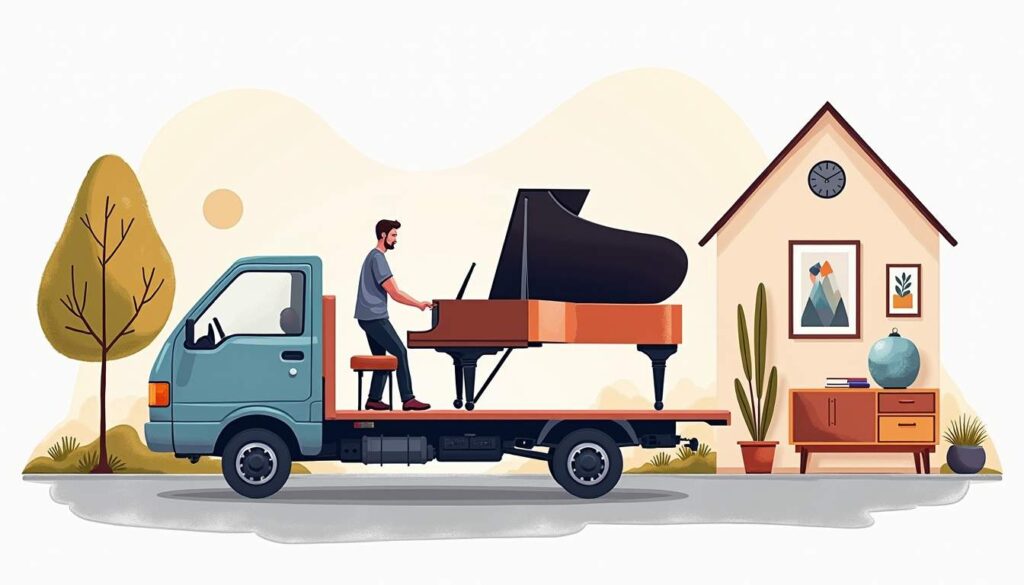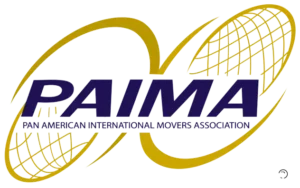Moving a piano is no small task. Whether it’s a grand piano, an upright, or a digital model, the intricacies involved in relocating this beloved instrument can be daunting. The weight, size, and fragility of pianos necessitate a specialized approach, which is why the rise of specialty moving services has become increasingly prominent in recent years. This article delves into the reasons behind this trend, the benefits of hiring professionals, and what to expect during the moving process.
The Complexity of Piano Moving
Pianos are not just heavy pieces of furniture; they are intricate musical instruments that require careful handling. The complexity of moving a piano lies in its construction and the potential for damage during transit. Each type of piano presents unique challenges, from the delicate strings and hammers to the hardwood casing. The craftsmanship involved in building a piano means that even slight mishandling can lead to significant issues, such as misalignment of the action or damage to the soundboard, which can affect the instrument’s tonal quality.
Understanding Different Piano Types
Before diving into the moving process, it’s essential to understand the different types of pianos. Grand pianos, for instance, can weigh anywhere from 500 to 1,200 pounds, while upright pianos typically weigh between 300 to 800 pounds. Digital pianos, while lighter, can still be cumbersome due to their size and electronics. Additionally, the design of each piano type influences how it should be moved; for example, grand pianos have a larger footprint and require more space to maneuver, while upright pianos are more compact but still need careful handling to avoid tipping over during transport.
Each type requires specific techniques for moving. Grand pianos, for example, often need to be disassembled to some extent, such as removing the legs and pedals, to facilitate safe transport. This disassembly process is not only about weight reduction but also about protecting delicate components. On the other hand, upright pianos can be rolled on specialized dollies, but this requires knowledge of the piano’s balance and weight distribution to prevent tipping. Understanding these nuances is crucial for ensuring a safe move, as improper techniques can lead to irreversible damage or costly repairs.
The Risks of DIY Piano Moving
Many people consider moving their piano themselves, thinking it might save money. However, this approach is fraught with risks. Attempting to move a piano without the proper equipment and expertise can lead to physical injuries, damage to the instrument, or harm to the property. The sheer weight of a piano can be deceptive; while it may seem manageable, the awkward shape and size can make it difficult to control, especially when navigating stairs or tight corners.
Heavy lifting can result in back injuries, while improper handling can cause scratches, dents, or even internal damage to the piano. The cost of repairs can far exceed the savings from a DIY move, making it a risky endeavor. Furthermore, even if the piano appears unscathed after the move, hidden damage such as loose tuning pins or misaligned keys may only become evident later, impacting the instrument’s performance. Professional movers not only have the right tools and techniques but also the experience to anticipate potential problems, ensuring that your piano arrives safely at its new location without any hidden issues.
The Emergence of Specialty Moving Services
Recognizing the challenges associated with piano moving, many companies have emerged that specialize in this niche. These specialty moving services have gained popularity for their expertise and tailored solutions, making them a go-to choice for piano owners.
Expertise and Training
One of the primary advantages of hiring a specialty moving service is the expertise they bring. These professionals undergo extensive training to understand the intricacies of various piano types and the best practices for moving them safely. They are equipped with the knowledge of how to disassemble and reassemble pianos, ensuring that every part is handled with care.
Moreover, these movers are familiar with the latest techniques and equipment designed specifically for piano moving. From custom dollies to protective padding, they have the right tools to ensure a smooth transition.
Insurance and Liability
Another significant benefit of hiring a specialty moving service is the insurance coverage they offer. In the event of an accident or damage during the move, professional movers typically provide liability insurance that protects both the piano and the property. This peace of mind is invaluable, especially when dealing with an instrument that holds both monetary and sentimental value.
In contrast, if a DIY move results in damage, the owner bears the full financial burden. This aspect alone makes hiring professionals a wise investment.
The Piano Moving Process
Understanding the piano moving process can help set expectations and alleviate any concerns. While every move is unique, there are common steps that most specialty movers follow to ensure a successful relocation.
Initial Consultation and Assessment
The process typically begins with an initial consultation. During this stage, the moving company assesses the piano and the environment from which it will be moved. They consider factors such as the piano type, its current location, and the destination.
Movers may take measurements of doorways, staircases, and hallways to determine the best approach for the move. This assessment helps them devise a tailored plan that minimizes the risk of damage.
Preparation and Packing
Once the assessment is complete, the movers will prepare the piano for transport. This preparation often involves removing any detachable parts, such as legs or pedals, and securing the piano with specialized padding and straps. Proper packing is crucial to prevent movement during transit, which could lead to damage.
Additionally, the movers will ensure that the environment is safe for the move. This may involve clearing pathways and protecting floors from potential scratches or dents.
Transport and Delivery
The actual transport of the piano is where the expertise of the movers truly shines. They will use specialized equipment, such as ramps and dollies, to navigate the piano safely out of the home and into the moving vehicle. Depending on the distance, the piano may be transported in a climate-controlled truck to protect it from temperature fluctuations.
Upon arrival at the destination, the movers will carefully unload the piano and place it in the designated location. They may also assist with reassembly, ensuring that the piano is set up correctly and ready for use.
Cost Considerations
While the benefits of hiring specialty movers are clear, many people wonder about the associated costs. The price of moving a piano can vary widely based on several factors, including distance, piano type, and any additional services required.
Factors Influencing Cost
Distance is one of the most significant factors affecting the cost of a piano move. Local moves tend to be less expensive than long-distance relocations. Additionally, the type of piano plays a crucial role; moving a grand piano will generally cost more than an upright due to its size and weight.
Other factors include the complexity of the move, such as the number of stairs involved or the need for disassembly. Some companies may also offer additional services, such as tuning after the move, which can add to the overall cost.
Budgeting for a Piano Move
When budgeting for a piano move, it’s essential to consider not only the moving fees but also any potential additional costs. Getting quotes from multiple specialty moving services can provide a clearer picture of the average costs in your area.
Investing in professional piano moving services is often worth the expense, given the protection it offers for both the instrument and the property. In many cases, the peace of mind and assurance of safety far outweigh the financial considerations.
Conclusion
The rise of specialty moving services for pianos reflects the growing awareness of the complexities involved in relocating these cherished instruments. With their expertise, training, and specialized equipment, professional movers provide invaluable services that protect both the piano and the property.
For anyone facing the daunting task of moving a piano, hiring a specialty service is a wise choice. It not only ensures a smooth and safe transition but also preserves the integrity of a musical instrument that often holds significant emotional value. In a world where convenience and safety are paramount, these specialty moving services stand out as the best option for piano owners.
Ultimately, whether it’s a grand piano or a simple upright, the importance of careful handling cannot be overstated. By entrusting the move to professionals, piano owners can focus on what truly matters—enjoying the music.
















